As I type this review, I have the Pixel 9 Pro XL sitting next to my keyboard, and all I want to do is keep picking it up and playing around with it.
This phone, Google’s highest-end flagship for 2024, is the most beautiful Pixel phone to date. It’s also the fastest and has the best screen, the best cameras and the most interesting AI features yet, thanks to Gemini. Compared to other flagships like the Galaxy S24 Ultra and OnePlus 12, the Pixel 9 Pro XL stands out as one of the best smartphones you can buy. Period.
It has its shortcomings, and it’s a bummer that the price went up this year for the same size phone. But this is genuinely the first time in forever that I’ve thought about ditching my iPhone and switching to the Pixel full time. It’s just that good.
Let’s talk about it, shall we?
With its upgraded design, stellar cameras and compelling AI upgrades, the Pixel 9 Pro delivers and is one of Google’s best smartphones to date.
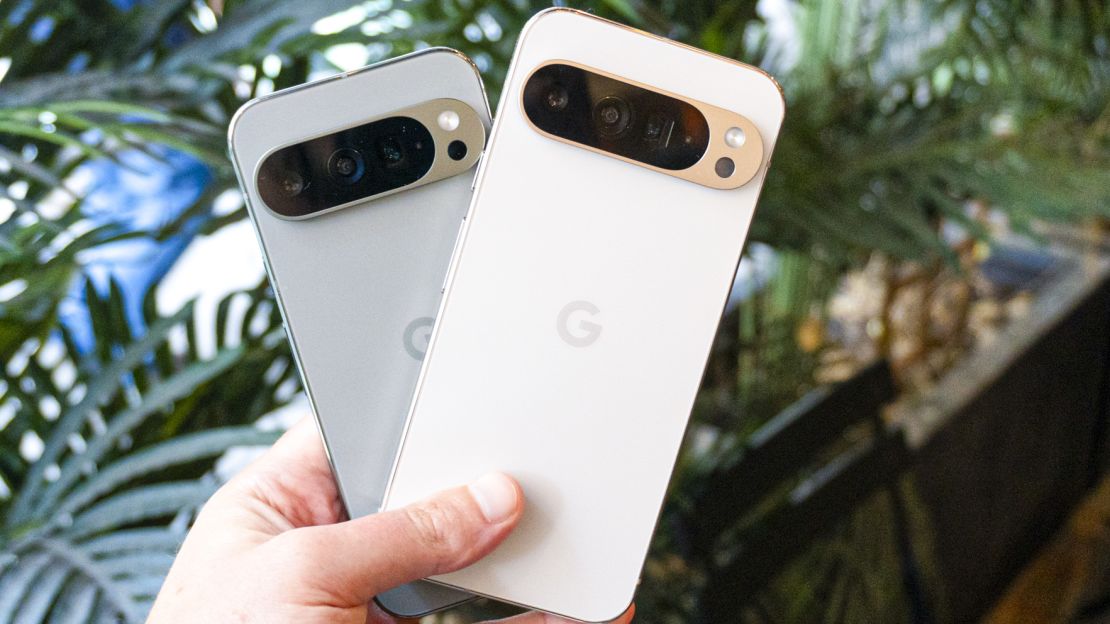
There’s no doubt about it: Google nailed the design of the Pixel 9 Pro series. Both the smaller version and the bigger one have flat edges, similar to the iPhone and recent Galaxy devices, as well as flat displays. The side aluminum rails have a polished finish for extra sheen, while the back glass offers a matte finish to reduce fingerprints. This thing looks sexy no matter how you hold it.
I got the Porcelain version of the 9 Pro XL and the Hazel version of the 9 Pro. They aren’t as exciting as the Wintergreen or Peony colors, but they’re sharp nonetheless. Google threw in an IP68 rating for dust and water resistance, and you won’t have to worry about scratching or cracking your screen (or at least worry less) thanks to Corning Gorilla Glass Victus 2 on the front and back.
I love the fact that Google decided to ship the Pixel 9 Pro series in two different sizes. For fans of smaller phones, there’s a 6.3-inch model, while those who need the most screen possible can choose the 6.8-inch version. I’ve spent most of my time with the 9 Pro XL, and the extra size is definitely worth it for getting work done, but the smaller variant is equally as nice since you can use it with one hand.
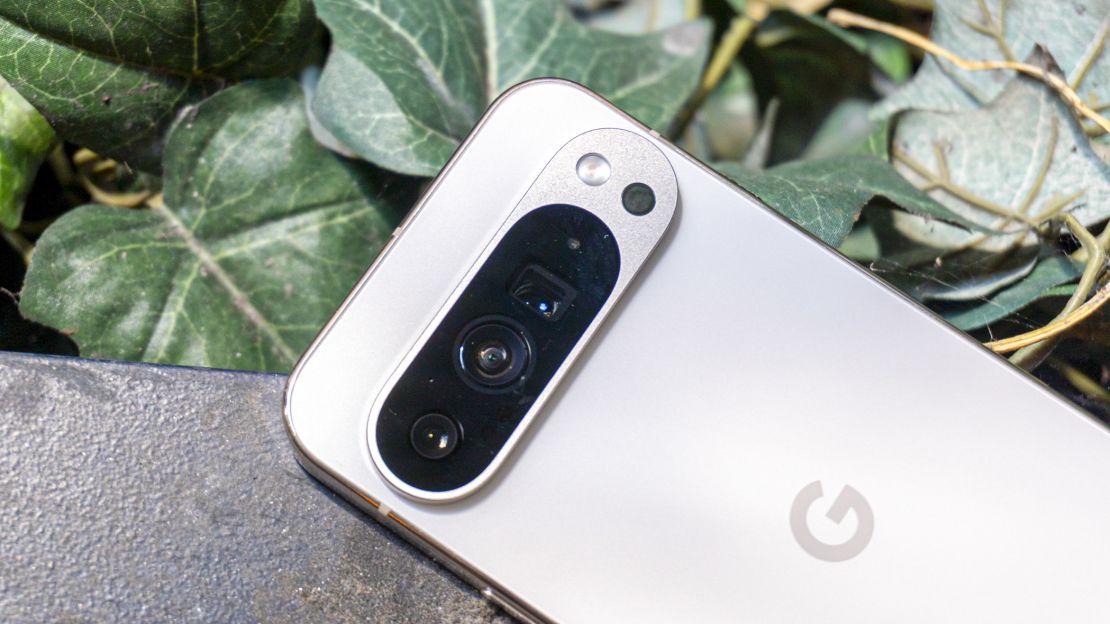
While it’s clear that the Pixels this year are more similar to the competition than ever, they’re still Pixels at heart. That’s evident by the huge camera bump on the back, which is now centered on the upper portion of the devices and doesn’t stretch all the way to the edges. I’m a fan of this look, although it still tends to collect a lot of lint.
Flip it around and you’ll see two gorgeous Super Actua displays. Google uses AMOLED panels with sharp resolutions to make everything look crystal-clear, colorful and vibrant. For the first time ever on a Pixel phone (and a rarity among smartphones in general), both phones come with 3,000 nits of peak brightness, which makes them insanely bright even in direct sunlight. I’ve never had an issue viewing either of these screens in the sunshine, and they surpass the best that Apple and Samsung have come up with, since their phones ship with 2,000 nits and 2,600 nits, respectively. If you want the brightest display, go with the Pixel.
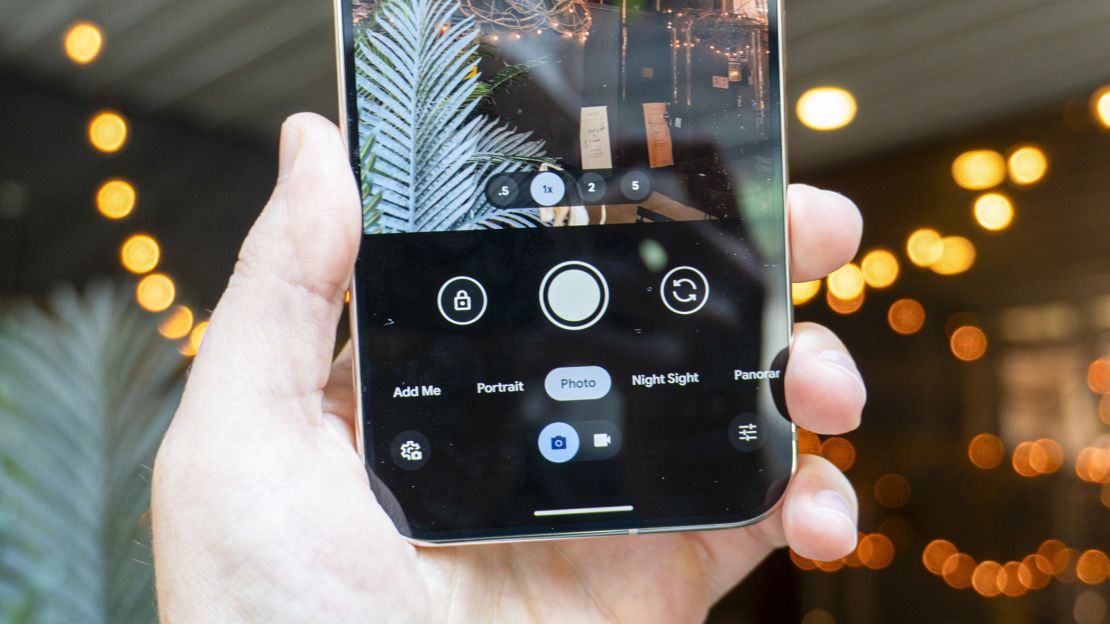
If you were wondering if these are the best Pixel cameras to date, I’m happy to report that they indeed are and they’ll give Apple’s iPhone 16 Pro some stiff competition when it hits the market.
Google includes the same 50-megapixel camera as it did last year with the Pixel 8, as well as the same 48-megapixel periscope telephoto lens that gives you sweet 5x optical zoom. This year, there’s an updated 48-megapixel ultrawide camera that has a slightly narrower lens but still captures amazing landscapes.
There isn’t one lighting situation that the Pixel would underperform in. It’s too easy for Google at this point; the company has aced the post-processing magic that goes into each photo, features like Night Sight and astrophotography make them some of the best low-light cameras on the market, and all the versatility of the hardware and pro controls in the camera app give you tons of flexibility to get the shot you want.
Google Pixel 9 Pro XL camera samples
The video quality is also amazing. For an Android phone, I’ve never seen 4K clips look this good. They’re virtually on par with the iPhone, something I’ve never been able to say. And that goes for all three cameras.
Compared to phones like the Galaxy S24 Ultra and iPhone 15 Pro, the Pixel 9 Pro has no issue keeping up and oftentimes surpasses them from a quality standpoint. Sure, you’ll get more natural-looking photos with the iPhone and much farther zoom with Samsung, but the Pixel offers a well-rounded package that you can rely on to capture life’s everyday moments.
On the other hand, if you want to remember moments in a way that’s different from how you experienced them, Google will let you do that with AI. On the Pixel 9 Pro, you can use Magic Editor to reimagine the background of a photo in your gallery, or reframe a certain photo so that your subject is properly centered. I liked toying around with these features, and they can be fun if you don’t take them too seriously.
What’s perhaps the most interesting camera update this year is Add Me. Take a picture of your group of friends, then have one of them take a picture of you in the same frame and watch the two images merge together so that everyone’s included. It works surprisingly well, or at least well enough that you won’t see any visual impurities from afar. Zoom in and you can see the stitching at play, so you might want to save shots like this for Instagram.

While it can be a gimmick at times (just look at the photos above of me at Peter Dillons in Manhattan), Add Me can definitely be useful if you’re somewhere special and want to make sure everyone’s in the group shot.
Of course, AI isn’t just in the camera. The big story around the Pixel 9 series is artificial intelligence, with Google integrating its Gemini chatbot with every version of the phone and completely replacing the Google Assistant as a result. While it’s not at the point where it should be the sole reason you buy a Pixel phone, it’s definitely getting there.
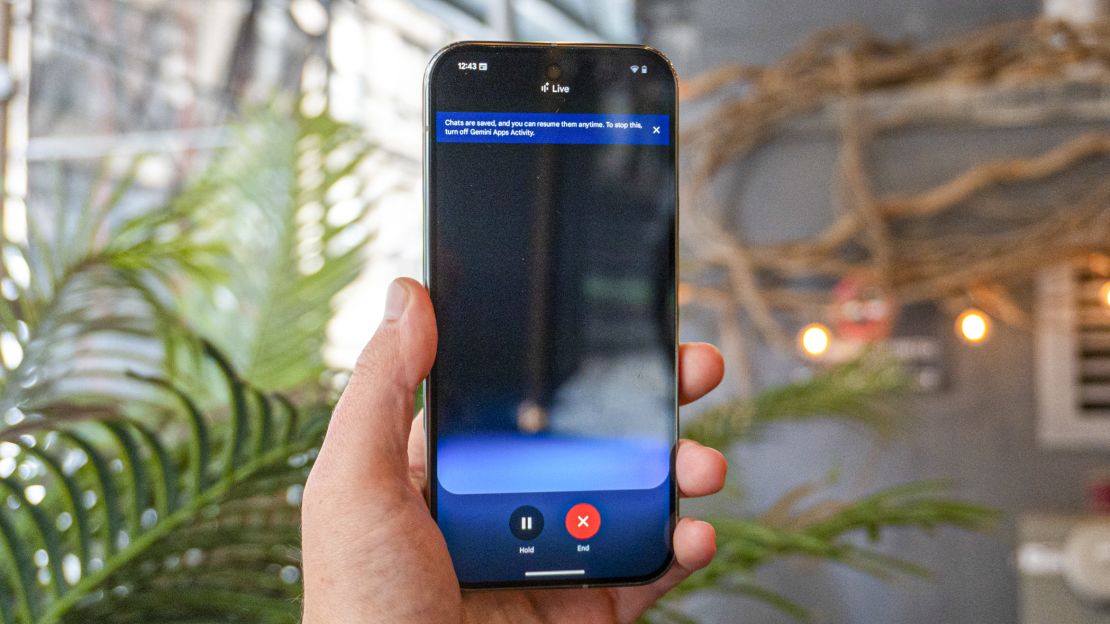
Gemini Live is a great example of this. With the Pixel 9 Pro, you can speak to Gemini as you would the Google Assistant, only it’s much more humanlike. You can ask it questions to research different topics, ask follow-up questions, interrupt the conversation and more. The experience feels like you’re speaking to one of those futuristic supercomputers that has access to all the knowledge in the universe, except in a dumbed-down version that runs on your phone.
Note that in order to access Gemini Live, you’ll need to subscribe to the Google One AI Premium plan, which will set you back $20 per month. Luckily, that also nabs you 2TB of cloud storage with Google Drive and Gemini in apps like Gmail, Docs and more. The best part? If you buy a Pixel 9 Pro series phone, you’ll get a year of it for free, which is a $240 savings.
Gemini Live isn’t the primary experience of Gemini. Instead, you have to start a live conversation with it to use it, but that’s probably for the best since it keeps the regular experience nice and simple. Hold down the power button and talk to Gemini like you would the Assistant and you’ll have a very familiar experience, just with the added benefit of more contextual responses and the ability to do things like generate images.
Gemini can understand what’s on your screen too, so you can learn more about a movie or YouTube video you’re watching. It also has a nifty UI that floats over the content you’re referencing, which is a nice touch.
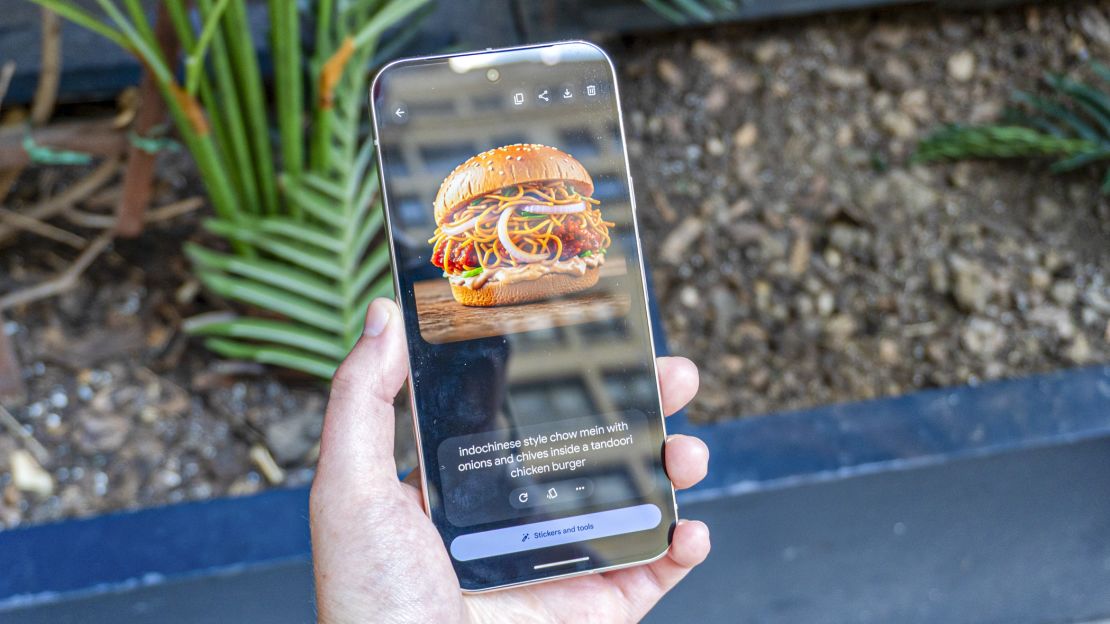
Some of the most useful AI features on the Pixel 9 Pro are Pixel Screenshots and Pixel Studio. They’re brand-new apps that rely on Google’s Gemini Nano model that runs locally on the Tensor G4 processor without the need for Wi-Fi (hence why the apps aren’t available on older Pixel phones).
I think most people will enjoy toying around with Pixel Studio. It’s similar to all those image generators you’ve heard about that let you create any kind of image you want using text prompts. Google includes a huge feed of examples to get your creative juices flowing, and you can tweak any of them to your liking. Later on, you can add your own text, stickers and effects, as well as add or remove any subjects or objects you don’t want. It’s a neat trick that could come in handy if you run a serious meme account or need a creative party invitation.
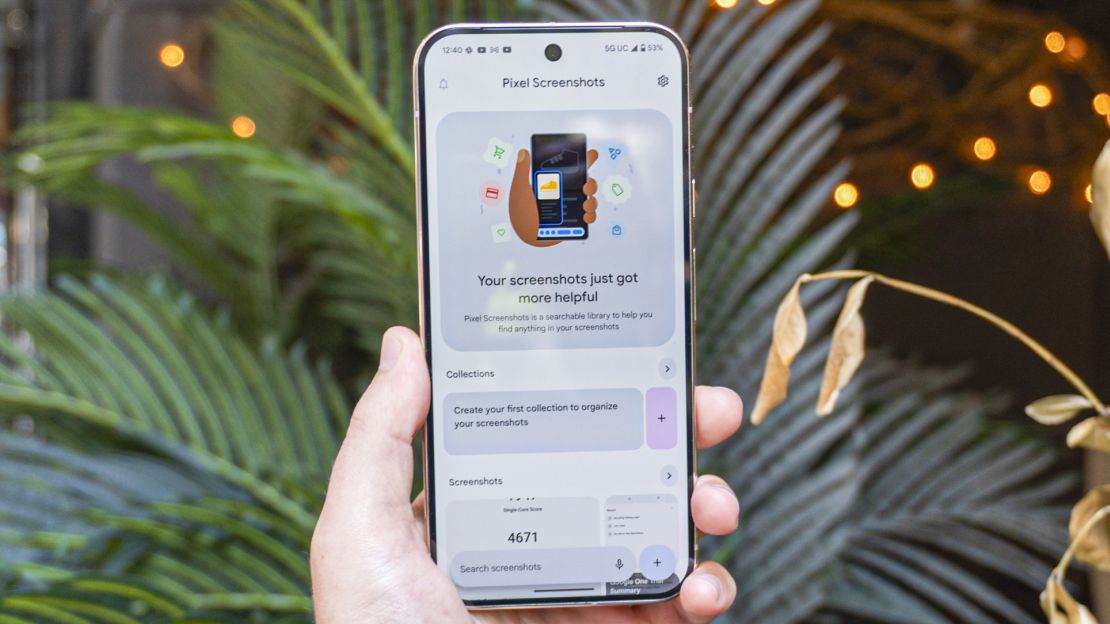
The app I’ve used the most is Pixel Screenshots. It’s the new home for all the screenshots you take on your phone, and it lets you sort through and organize them all with ease. The fun starts when you hit the search key. Using Gemini, the Pixel 9 analyzes the contents of each screenshot and lets you locate the image you had in mind. For example, if you found the best burger recipe you’ve ever seen in your life but it’s been a few months, you can search for “burger recipes” and it’ll pop up. You can even search for text in screenshots, like Wi-Fi passwords you took a screenshot of while you were at your buddy’s place.
Over time, Pixel Screenshots can easily become a go-to tool for every Pixel user who takes way too many screenshots. I really hope other companies copy this idea, because it’s pure genius.
Google also added the ability to generate lists in Google Keep so you can sort out things like grocery lists before you head to the supermarket for taco night. There are now AI summaries of the weather in the new Weather app (which are surprisingly useful), and you can record a phone call and have it automatically transcribed using Call Notes.
The latter is one of the more interesting features on the Pixel: It alerts each caller before a recording begins, then records and processes the call in real time on the device without sending anything to Google’s servers. After you hang up, Call Notes gives you a summary of the call and any notable information that stood out. That way, you don’t have to worry about missing key dates or phone numbers.
I didn’t test this feature a ton, but the few times I did, it seemed to work really well. I’ll have to test it more in the future to get a better read, but signs are so far positive.
Terrific performance and software support
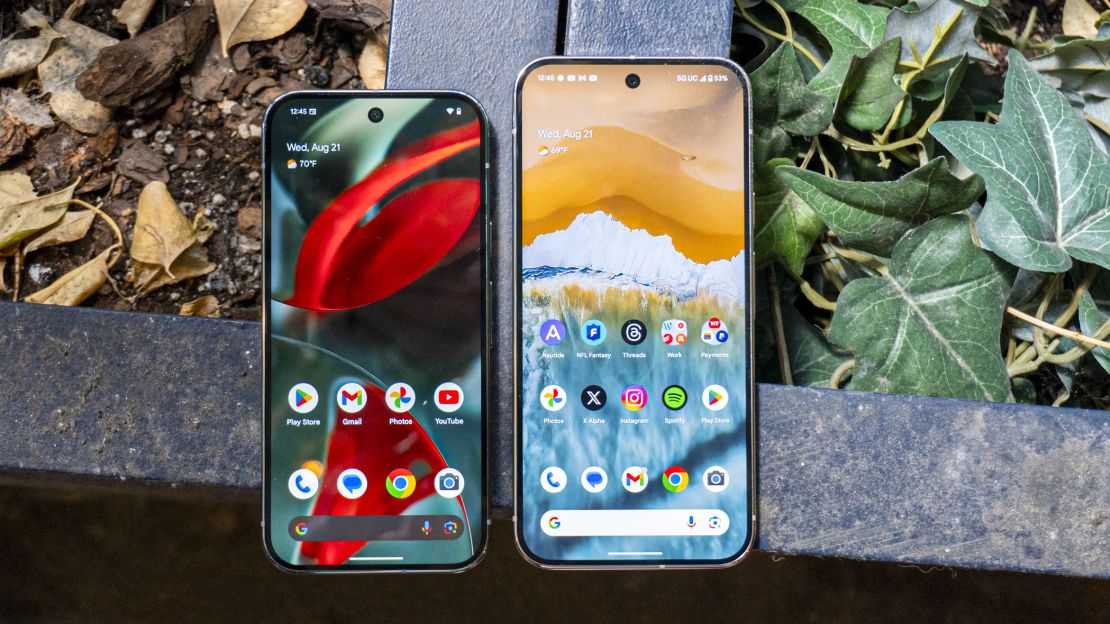
The Pixel 9 Pro series gets Google’s Tensor G4 processor which is about 10% faster than the G3 from last year, and it holds up well against what you’ll find in the latest iPhones and Galaxy devices. Sure, it isn’t quite as powerful as the competition in benchmarks, but it’s still plenty fast for tackling everything you do on your phone.
Multitasking is a dream on both of these phones, thanks to the 16GB of RAM that’s included, which is far more than I’m used to in smartphones. Everything flies on the Pixel 9 Pro, and I’ve never experienced any sort of slowdown because of it.
As per usual, Google delivers on the software front. The experience is first-class, with a clean UI and plenty of smart features like Now Playing and Call Screen. While the Pixel 9 Pro currently ships with Android 14 out of the box, it’ll soon be updated to Android 15. In addition, Google is promising seven years of upgrades with its entire lineup of phones, which means you can keep using it for years down the road and still get all the latest features.
I have no idea what Google’s done with the vibration motor on the Pixel 9 Pro series, but it’s excellent. It’s about as good as Apple’s Taptic Engine, except a tad less sharp. Still, everything from typing on the keyboard to your phone vibrating when you get a phone call feels premium, which isn’t something you can say about a lot of phones on the market. The haptics were really good on the Pixel 8 too, but the Pixel 9 Pro takes things to the next level.
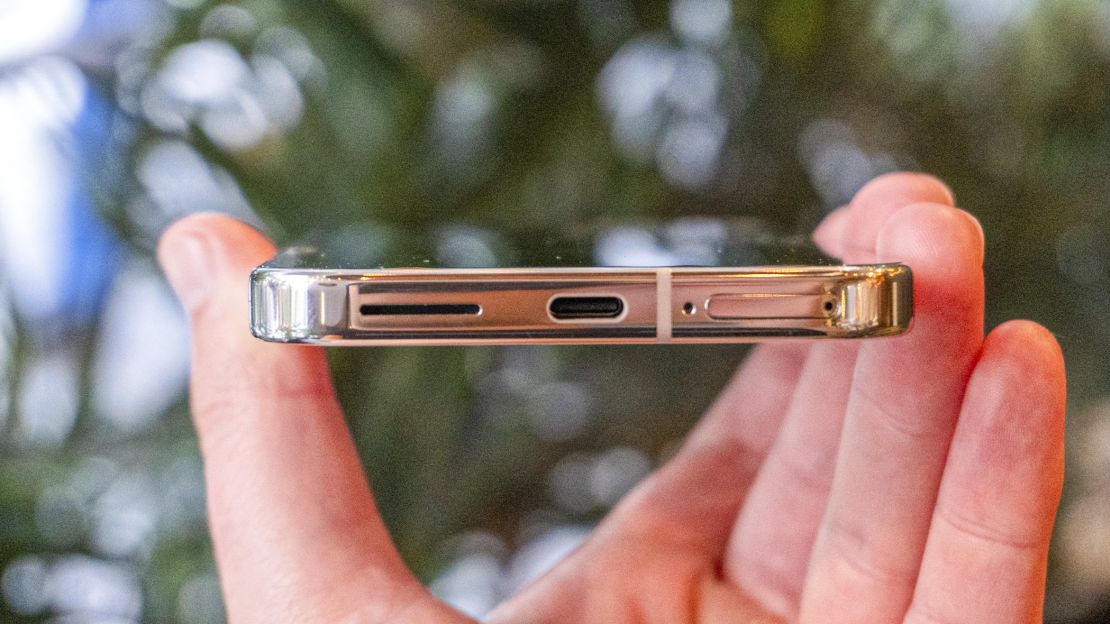
I was a bit let down by the battery life on the Pixel 9 Pro and 9 Pro XL. It isn’t necessarily bad, but they’re both firmly one-day phones, whereas I was hoping for something more.
The Pixel 9 Pro gets a 4,700mAh battery while the 9 Pro XL has a 5,060mAh cell, and they both perform fine. You can easily cruise through a full day of usage without issue, and you’ll likely have somewhere around 10% to 20% in the tank before you go to bed. But while other phones like the S24 Ultra and OnePlus 12 can easily stretch into day two on a full charge, it’s a shame that Google wasn’t able to achieve the same thing with its phones.
Luckily, Google makes up for it by including 45W charging support, the first time ever on a Pixel phone. You still need to buy your own adapter, however, such as Google’s own that’ll cost you $30. If you don’t do that, you’ll be stuck with 15W wireless charging (regular Qi, by the way, not the fancy magnetic Qi2 that’s supposed to be rolling out soon).
The Pixel 9 Pro is technically more expensive this time around. Whereas you could get the big Pixel phone for $1,000 last year, that option has been replaced by the regular 9 Pro while the 9 Pro XL starts at $1,100. Even the regular Pixel 9 is now priced at $799 instead of $699 like before.
Whether the prices are justified or not, there’s no doubt that paying more money for something that used to cost less is a bummer, so if you want to save money on your next smartphone, you might want to look into last year’s models.
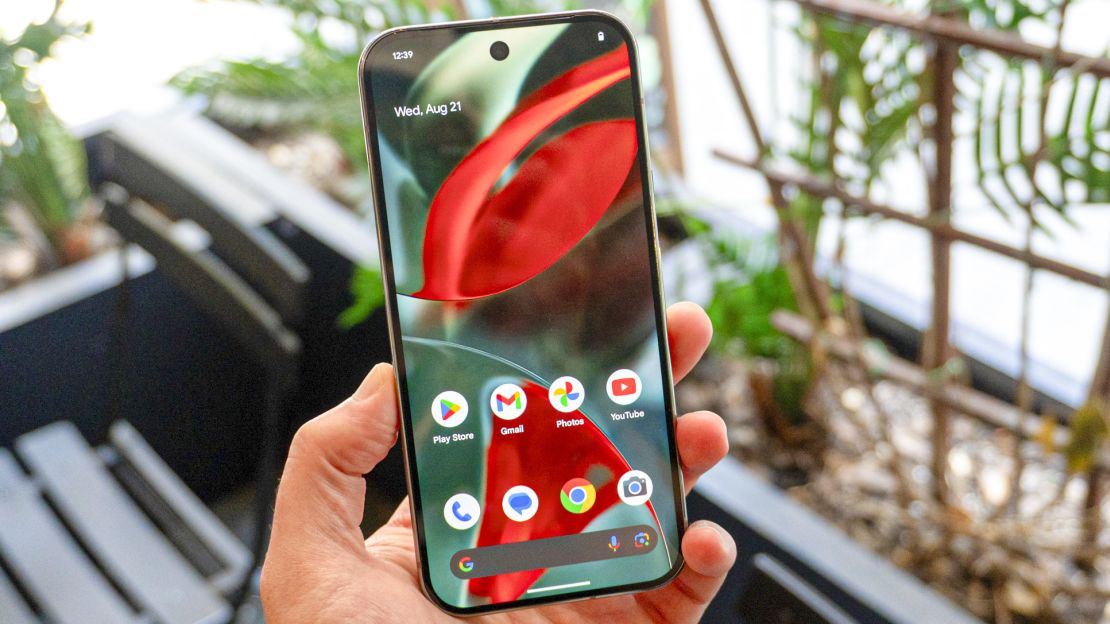
It is the Year of Our Lord 2024. We have advanced AI computers that can answer virtually any question you ask, cars that can drive themselves across the country, rocket ships that can launch and be reused later, and yet, somehow, the Pixel 9 Pro series still starts at 128GB of storage.
For some people, that might be enough. Maybe you don’t use a ton of apps or take a lot of video, and for that I commend you. But whereas the rest of the industry (including Apple) has made the leap to 256GB for the base configuration, Google somehow still believes that 128GB is enough to compete with everyone else.
That means if you want the same storage spec that the rest of smartphone buyers get, you’ll need to spend another $100 for the upgrade at checkout, which is pretty crummy.
The Google Pixel 9 Pro and 9 Pro XL are the best Pixel phones to date, and I have no problem recommending them to anyone searching for their next high-end Android phone. Their downsides are far outweighed by how good the rest of the experience is, and with seven years of promised software updates, they’ll feel new for years down the road.

